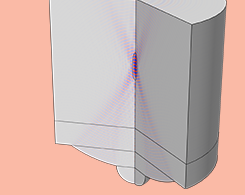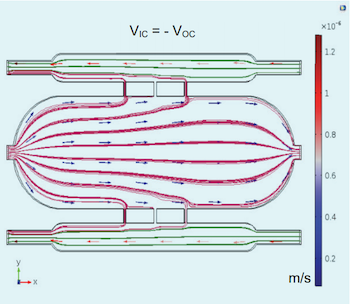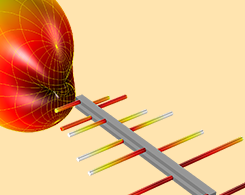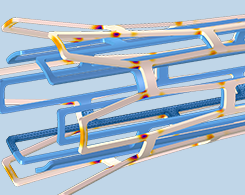Blog Posts Tagged Bioengineering

Optimizing a Microlens Design for Optogenetics Applications
Optogenetics is a field of study that could shed light on neurology and memory. To design an optimized microlens for optogenetics uses, these researchers turned to multiphysics simulation.

Analyzing a New Droplet-Forming Fluidic Junction with Simulation
A novel oscillatory microfluidic junction design, called a “batwing”, is improving the field of droplet microfluidics by consistently producing uniform and complex double-emulsion droplets.

Using Simulation to Study Ultrasound Focusing for Clinical Applications
Guest blogger Thomas Clavet of EMC3 Consulting discusses the simulation of ultrasound focusing via phased array and geometrically focused probe designs for clinical uses.

Simulating Cancer Cell Migration in Microgravity with COMSOL®
Researchers used multiphysics simulation to determine how microgravity effects the migration of metastatic cancer cells. Their results could have new implications for therapy and treatments.

Designing Accurate EMC/EMI Testing Equipment with RF Modeling
EMI/EMC testing is used to ensure that various products, processes, and systems meet standard compliance requirements. RF modeling can be used to design equipment for accurate analyses.

New FEM Book Offers Modeling Guidance for Biomedical Applications
Guest blogger Guigen Zhang of Clemson University discusses his new bioengineering textbook, which focuses on computational modeling for biomedical applications.

How to Model Heat and Moisture Transport in Porous Media with COMSOL®
Modeling the transport of heat and moisture in porous media, like building envelopes and other construction materials, is a simple process with a predefined Heat and Moisture Transport interface.

Finding an Accurate Model to Study Blood Flow Around a Stent
Biomedical example involving CFD simulation: In order to analyze the blood flow around an arterial stent, you need a fluid model that can describe blood’s non-Newtonian behavior.
